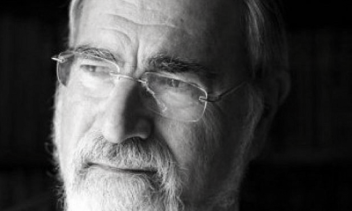Science and religion have long had a complicated relationship. At times friends, other times lovers, and occasional enemies, engagement between the worlds of reason and revelation is fraught with millennia of debate and discussion. This month, 18Forty is thinking about the relationship between science and Judaism, and the many manifestations of this relationship.
Karl Ove Knausgard, the celebrated Norwegian author, brings the following perspective to the relationship between science and literature:
The word that Lucretius used for “atom” is the same word he used for “letter of the alphabet.” This was also true of the first of the Greeks to write of the atom: they, too, employed the term for “letter of the alphabet.” Lucretius repeatedly compares atoms with letters; just as the same few letters may be combined in endless ways to express everything between heaven and earth, the same few atoms may be combined to create heaven and earth and everything in between.
Science and literature alike are readers of the world. And, sooner or later, both lead us to the unreadable, the boundary at which the unintelligible begins. In one of her essays, Inger Christensen writes that that boundary, between intelligible and unintelligible, exists within us; science, she writes, conducts the conversation between readability and unreadability using terms such as chaos theory, fractals, and superstrings only because to use the word “God” would seem overbearing.
Everything exists side by side. Atoms, letters of the alphabet, literature, science, the world. And insight and destruction.
The relationship between science and religion, particularly Judaism, has many faces. As Knausgard puts it, “everything exists side by side,” and we seek to honor the many faces of this everything by inviting guests from a wide array of backgrounds and specialties. Join us on this journey, as we look through the lenses of religion and science, and the many paths the two have taken over the millennia. Science, like mysticism, can lead us to the sense of wonder that seems so often to be missing from the contemporary era, and we invite you to join us on this journey.
Science & Religion Introduction
What is the Jewish perspective on science? There are few things more triggering to those who appreciate Jewish thought than the assumption that Jewish thought presents a single face on any one topic, or that there is even any one ‘Jewish perspective’ on a topic. Jewish thought is multivalent, with many voices bearing down on each topic.
This is particularly pointed in the question of the relationship between science and Judaism. As a fundamental question about the nature of revelation, reason, the boundaries of understanding and faith, there is no one answer. This month, 18Forty is thinking about science and religion. This complex topic carries the weight of thousands of years of debate, and oversimplifying this legacy into any one conclusion dishonors the many voices that have spoken and written throughout history.
We begin our consideration of the relationship between science and religion by honoring the multivocal legacy of the Jewish tradition and providing you with an introduction to some of the ways science and Judaism have interacted. These philosophical perspectives are by no means independent from each other, and in many contexts they overlap and interrelate, but we provide them on their own to get a sense of some of the dynamics that narrate this relationship. To learn more about the history of this interaction, read the erudite article on “Historical Interactions Between Judaism and Science” by Jeff Dodick and Raphael B. Shuchat, whose framing on the philosophical approaches to this relationship we are indebted to.
The two books might be in different genres, but they complement each other, each offering something to the other.
There has long been a notion of there being two books: the book of scripture and the book of nature. This appears in the writing of luminaries from the Rambam to Rav Tzadok, as well as in a host of Christian thinkers. Many of the questions about science and Judaism (or religion, more broadly) can be conceptualized as a question of the relationship between these two books. For some thinkers, the two books are synonymous or at least in harmony; whereas for others, seeming conflicts between the two books is due to the fault of one or the other. Consider this lens when thinking about science and Judaism, and the many ways this relationship has manifested itself.
Five Attitudes on the Relationship Between Science and Judaism
1: Limiting Approach
When the two books conflict, and the Torah doesn’t seem to mesh with science, this approach limits the reach of one of the books. This might limit the scope or breadth of science, arguing that scientific views change all the time, whereas the Torah is authentic and unchanging. The anti-evolutionary stance by some rabbinic thinkers, such as Rabbi Avigdor Miller and Rabbi Menachem Mendel Schneersohn, might be an example of this approach, as they jointly diminish the dangers of evolution by emphasizing the ever-changing nature of scientific knowledge, and deign, therefore, to accept the Torah’s creation narrative as is.
Alternatively, it might argue that what we know about the Torah is also limited, and we might not yet understand the Torah well enough to know how it fits the truths of science. This perspective can take two forms: it might limit the doctrines themselves, arguing that Torah always trumps science or vice versa; or it might limit our understanding of these doctrines, emphasizing our lack of sufficient understanding of either doctrine. In the rabbinic world, this has been cited to explain how scientific theories about the age of the universe and evolution might change in time, eventually meeting the truths revealed by the Torah.
2: Explanatory Approach
In this approach, a conflict between Torah and science prompts a reconsideration of one’s understanding of Torah, and a reinterpretation of the prior religious understanding. Biblical texts that clash with scientific understanding may be reinterpreted to fit the current scientific norm, allowing the two books to meet comfortably. The Rambam often utilized this approach, reconsidering portions of the Torah in light of the scientific thought of his day. This approach, with its emphasis on reconsidering long-held religious notions, demands great courage and creativity, and can birth particularly novel approaches to traditional literature.
3: Parallel Approach
Science and Torah are both valuable, but the two domains should not meet. While both explain facets of this universe, they need not conflict or even address one another. Scientist Stephen J. Gould’s term “respectful noninterference” frames it well. In the words of the great (if at times controversial) Jewish philosopher Yishayahu Leibowitz, science cannot conflict with religion because the two seek to answer fundamentally different questions. We might put it this way: While both books are important and true, they occupy different shelves in the cosmic bookstore, each in its own genre.
4: Complementary Approach
The two books might be in different genres, but they complement each other, each offering something to the other. This perspective places science and Torah in close contact, seeking the sacred synthesis that might emerge from the meeting of two truths. In one particularly powerful demonstration of this perspective, Rabbi Avraham Isaac Kook saw evolution as a non-issue for the religious Jew. He went further to identify spiritual potential in the ideas of evolution, which Rav Kook felt has a deep affinity with the “secret teachings of the Kabbalah:” “Evolution which proceeds on a course of improvement offers us the basis for optimism in the world. How can we despair when we realize that everything evolves and immediately improves … Evolution sheds a light on all the ways of God.”
5: Conflict Approach
Science and Torah may not ask the same questions, but they certainly offer conflicting answers. This perspective sees the conflict and doesn’t recoil or reinterpret. Some might face this perspective and choose to diminish the value of one of the two books, but others might allow the conflict to live in its fullness, allowing science and Torah to live in disharmony, while continuing to attempt life in fidelity to one or both of these books. While this approach is rarely stated explicitly or taught widely, and cannot as easily be attributed to any one thinker or debate, it constitutes a silent dynamic present in those who read and think through conflict without resolution or compromise between the two books.








